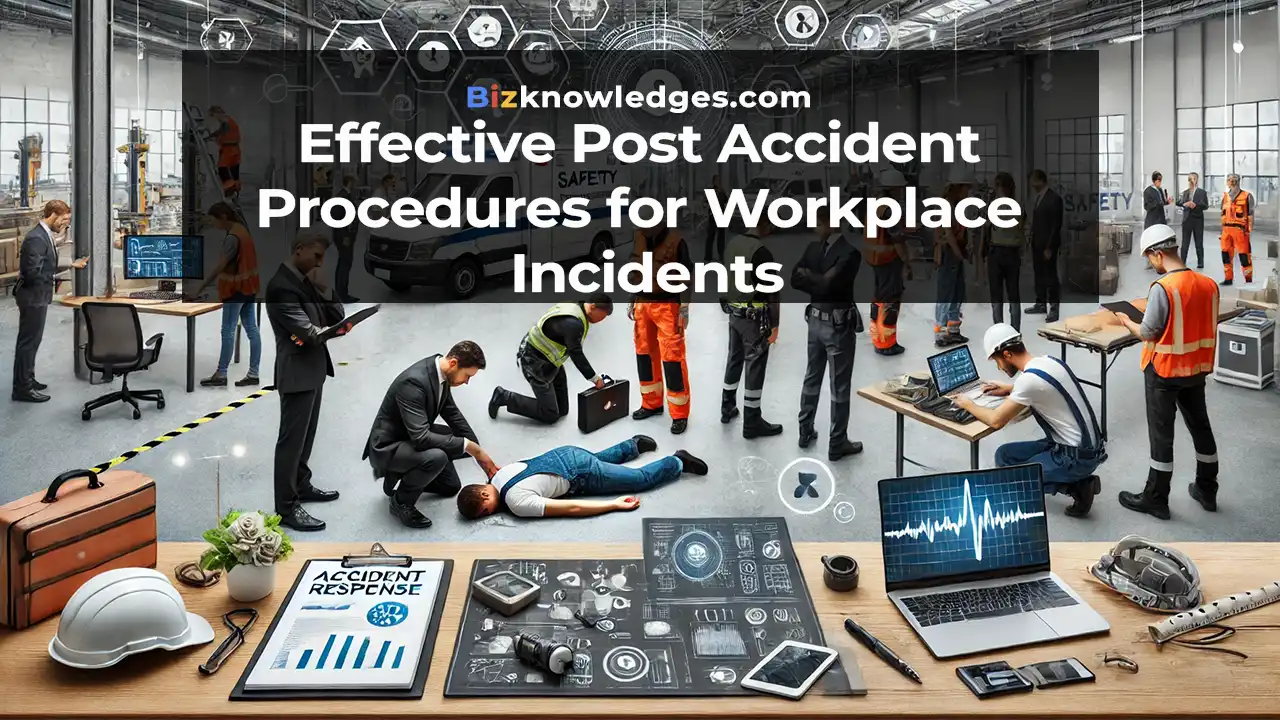Effective Post Accident Procedures for Workplace Incidents

Workplace incidents can strike when least expected, leaving both employees and employers scrambling to pick up the pieces. Knowing exactly what to do after an post accident isn’t just about ticking boxes; it’s about ensuring everyone’s safety, maintaining compliance, and mitigating potential losses. This article dives into effective post-accident procedures that can help your business bounce back stronger and more prepared.
the Importance of Immediate Action Post Accident
Acting swiftly after a workplace accident is essential for addressing the incident, ensuring prompt medical attention, and maintaining a calm environment. Quick responses help preserve evidence for investigations and support legal compliance. Moreover, immediate action demonstrates a commitment to employee safety and well-being, fostering trust and a culture of safety within the organization.
Ensuring Medical Attention
Employee safety and health should be the top priority, emphasizing the need for prompt medical attention for injured workers, whether through emergency services or transportation to medical facilities. Having a first aid kit and trained personnel on-site can significantly improve initial care. Additionally, maintaining a list of nearby medical facilities ensures quick access to appropriate care, as every second counts in emergencies.
Conducting a Thorough Investigation
After addressing immediate medical needs, it’s crucial to conduct a thorough investigation of the incident to understand its root cause and prevent future occurrences. This includes gathering witness statements, documenting the scene, reviewing surveillance footage, and considering environmental factors. Involving a safety officer or trained professional can provide valuable insights and improve safety protocols, ensuring a comprehensive approach to prevention.
Reporting and Documentation
Accurate reporting and documentation after a workplace incident are crucial for legal compliance and insurance purposes. This includes completing an accident report with details like date, time, and a description of the event, as well as photographs of the scene and equipment involved. Maintaining records of past incidents can help identify patterns to improve safety measures and prevent future accidents, promoting long-term safety enhancements.
Communicating with All Stakeholders
Effective communication is crucial after a workplace incident to ensure transparency and build trust among all stakeholders, including employees, management, and clients. Keeping everyone informed helps manage rumors and provides a consistent understanding of the situation. Additionally, sharing lessons learned can strengthen the workplace safety culture by encouraging collective responsibility and proactive engagement in safety practices.
Implementing Corrective Measures
Addressing the root cause of incidents is essential for prevention. This involves reviewing and updating safety protocols, equipment, and training to minimize risks. Engaging employees in this process fosters collaboration and uncovers practical solutions, enhancing the safety culture. Regular reviews ensure protocols remain effective, demonstrating a commitment to continuous improvement in the workplace.
Learning and Adapting
Every incident is a chance to learn. Analyzing mistakes and gathering feedback is crucial for preventing future issues. Promoting a culture of continuous learning encourages open safety discussions, where employees can share insights without fear. Adapting procedures based on these lessons helps the organization become more resilient, turning incidents into opportunities for growth and improvement.
Building a Safety-First Culture
A strong safety culture is crucial for a resilient organization, fostering shared responsibility for safety among all employees. It emphasizes proactive risk management and encourages open communication about hazards. Regular training sessions equip employees with the skills to identify and manage risks, while celebrating safety milestones boosts morale and reinforces positive behaviors.
Leveraging Technology for Enhanced Safety
Technology significantly enhances workplace safety through innovations like wearable safety devices, AI-driven analytics, and real-time monitoring systems. For instance, on-site drug testing in Oregon allows for immediate detection of impairments, reducing risks and improving safety protocols. Investing in these technologies reflects a proactive approach, offering valuable data to inform decisions and promote continuous safety improvements.
Ensuring Compliance with Regulations
Compliance with safety regulations is essential for organizations, requiring adherence to local, state, and federal workplace safety laws to avoid fines. Regular audits and inspections help identify compliance gaps, while engagement with regulatory bodies ensures updates on legislative changes. This proactive approach fosters a safe working environment and prevents significant issues.
Fostering Employee Involvement
Employee involvement is vital for effective safety management, empowering individuals and fostering ownership. This can include participation in safety committees and inspections. Recognizing contributions reinforces positive behavior and cultivates a safety-focused culture. Encouraging open communication through an open-door policy allows employees to share concerns and suggestions, leading to improved safety strategies.
Conclusion
Navigating workplace incidents requires a comprehensive approach focused on safety, communication, and continuous improvement. Effective post-accident procedures not only address incidents but also enhance the overall safety culture. Workplace safety is a collective effort, and fostering a safety-first culture helps ensure employees feel valued and protected. Investing in safety today builds a resilient organization for tomorrow.
